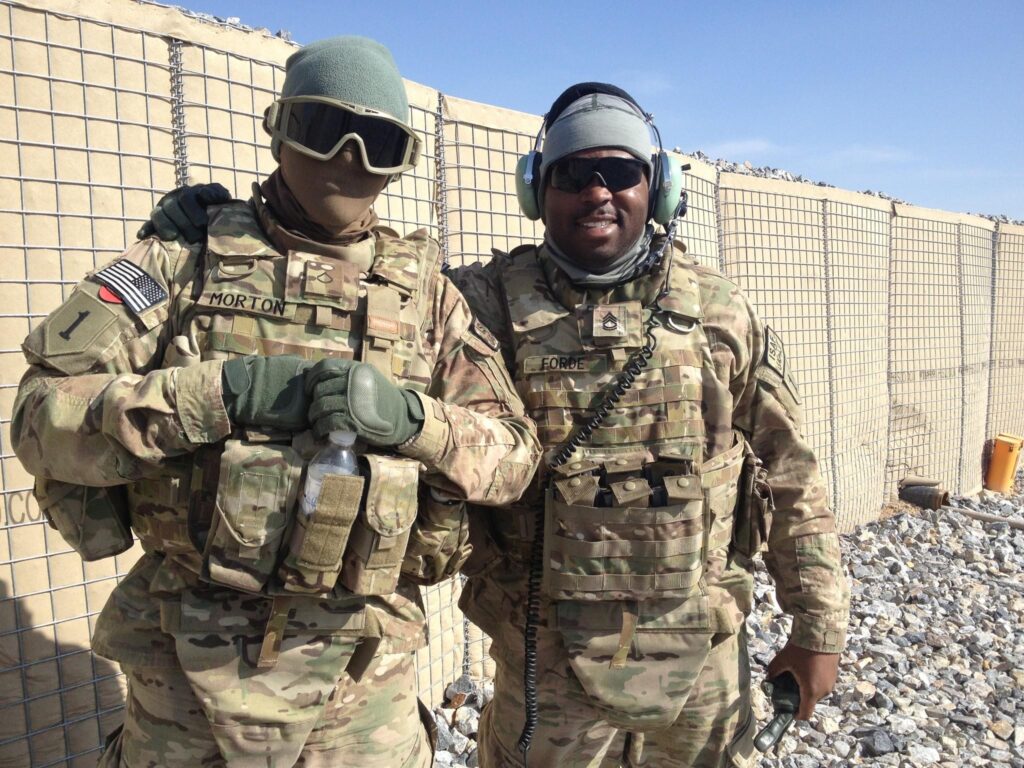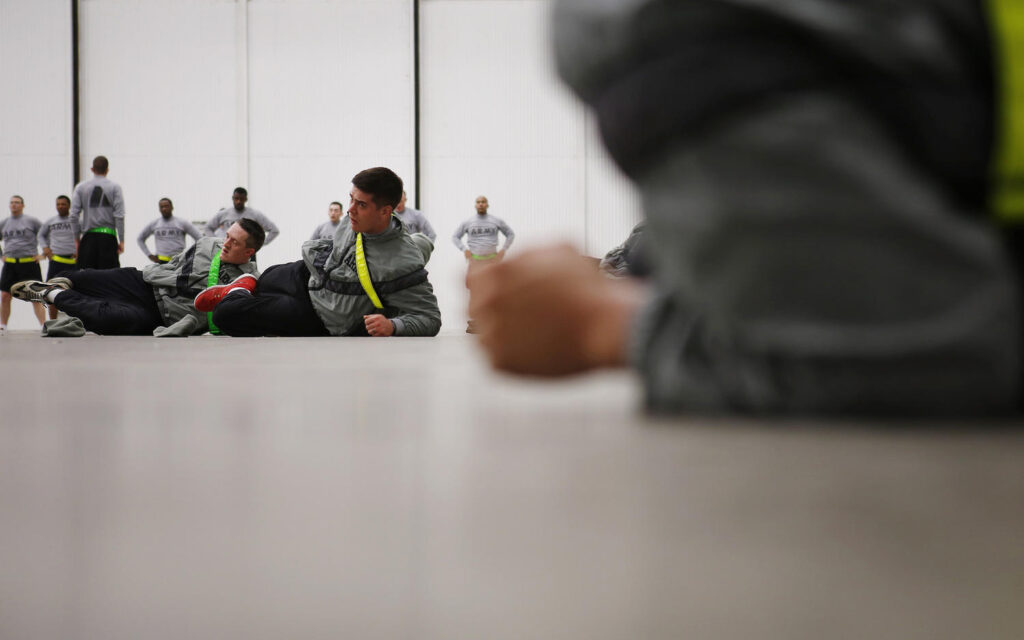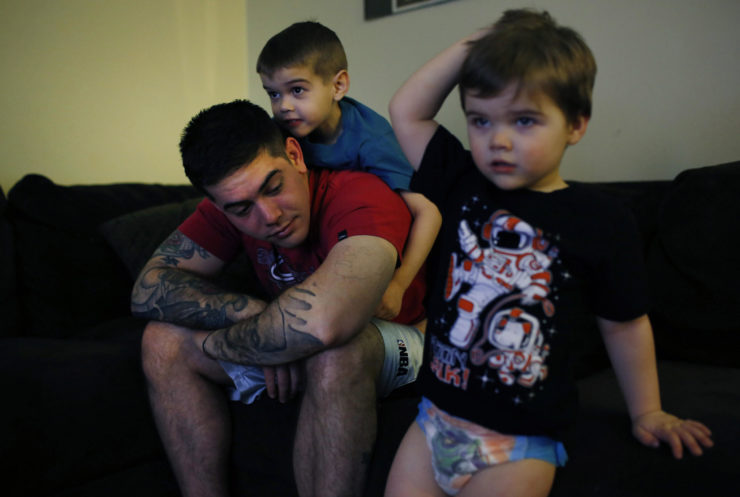We’ve become too familiar, sadly, with the narrative of destructive PTSD as troops return from Afghanistan and Iraq. But in the hands of Los Angeles Times writer Thomas Curwen, we find a quieter but no less devastating picture of PTSD’s effects on a soldier and his family.
Curwen’s narrative about Jayson Morton, the sole survivor of a Blackhawk crash, is compelling because his disorder exhibits itself not in bouts of violence or alcoholism, but in noiseless despair:
Afterward, he stopped by Wal-Mart to buy a DVD of “Teenage Mutant Ninja Turtles.” Whitley texted him that they didn’t have the money.
“I need something to distract me,” he explained when he got home.
The story opens in his home, rife with the sounds of war, as Jayson loses himself in Call of Duty, a first-person warfare video game. The game’s presence is artfully woven throughout the story. Before deployment, it’s a fun though unrealistic preview of what’s to come. His friends have to remind him that, in real life, you can’t come back from the dead to try again. After deployment, it becomes a tool of distraction -- and a frustrating barrier between him and his wife, Whitley.
In his first draft, Curwen says, he began the story with the helicopter crash. But he came to realize that the heart of the narrative lay in the tension at home, so he opened instead with Jayson absorbed in a Call of Duty and Whitley crying alone on the kitchen floor, a deeply powerful scene.
He keeps his sentences and paragraphs markedly short. In scenes of war, they read like gunshots, fast and rapid fire. In scenes at home, they enhance the eerie, shallow calmness that has descended over the family.
Curwen then transitions abruptly into an onomatopoeic description of the moments leading up to the crash. As I read it, I can hear the pings of the helicopter under gunfire and the kavoom of the explosion that brought it down. I don’t only hear the sounds of the crash, though. I can smell it, feel it, because of Curwen’s thorough incorporation of sensory details:
He sucked in his breath and with it the stink of diesel and the menthol tinge of cold altitudes, more than 9,500 feet in the middle of December.
Ford would know what to do. He had survived plenty of explosions riding in armored vehicles in Iraq.
But a Blackhawk isn’t an armored vehicle. It’s a tin can, and this one seemed to hang motionless, frozen between heaven and Earth.

Curwen then moves into an explanatory section where we learn more about Jayson and his relationship with his division — his close bond with his boss, Sgt. 1st Class Omar Ford; their job jamming enemy communications in Afghanistan; Jayson’s excitement at getting the job and, hopefully, making a difference.
This tactic is effective because Curwen continues to foreshadow, build the tension and move closer to the moment of the crash before pulling back and providing explanation that strengthens the narrative. We begin to understand all that Jayson lost that day: his comrades, his best friend, his health, even his bond with Whitley.
Here’s another example of the technique: When Curwen writes about Jayson’s rescue and Whitley’s terrified inquiries into her husband’s whereabouts, he pulls back again to recount their first meeting, the kindling of their relationship and Jayson’s determination to join the Air Force to provide for the family.
Curwen’s continual layering of scenes adds to the depth of Jayson’s suffering. The veteran becomes increasingly reticent and withdrawn, throwing himself into his work, his training and Call of Duty in an attempt to stifle his grief and his survivor’s guilt — and pulling further and further from Whitley. He tells her, “You’ll never understand,” a quote that’s like a punch in the gut.
Whitley meets this statement with silence and sadness, as she worries about what it will do to him if he’s not redeployed -- and wonders if she could ever ask Jayson to leave the Army. Even in moments without dialogue, Curwen has asked the tough questions that allow him to incorporate the characters’ inner monologues.

When Whitley moves to Kentucky with their boys, it finally begins to dawn on Jayson that he might have PTSD. Curwen takes us into his thoughts:
Maybe he had PTSD after all, he thought. But if so, it was nothing like he imagined. No flashbacks, no freak outs, none of the crazy stuff.
Just loneliness.
Throughout the piece, Curwen uses telling details to reveal depth in his characters: the prayer Whitely has hanging on the refrigerator, the yarn good-luck charm paramedics cut from Jayson’s ankle after the wreck, the email Whitley sent Jayson when she didn’t know if he was alive or dead, the $30 rings from Wal-Mart they exchanged at their wedding.
The shorter sentences and paragraphs help keep readers in the moment, move them through the story quickly and make them feel as if they don’t have to work to do so. He compares it to fishing. “If you get a strike, you just play the line out so that the fish has the hook in their mouth and they don’t even know it,” he says. “They’re running away off to the horizon thinking that this is the greatest thing in the world, and then you just let it play.”
As the story reaches its conclusion, Jayson enrolls in therapy, faces his PTSD diagnosis and reaches out to his family again. And in a touching and symbolic ending, Jayson gives Whitley a copy of new and old dog tags on a chain:
Scratched and dull, the old one had been with him in basic training and in Afghanistan.
It had been closest to his heart when Arrowsmith 35 went down.
He reached out and put the tags around her neck.



